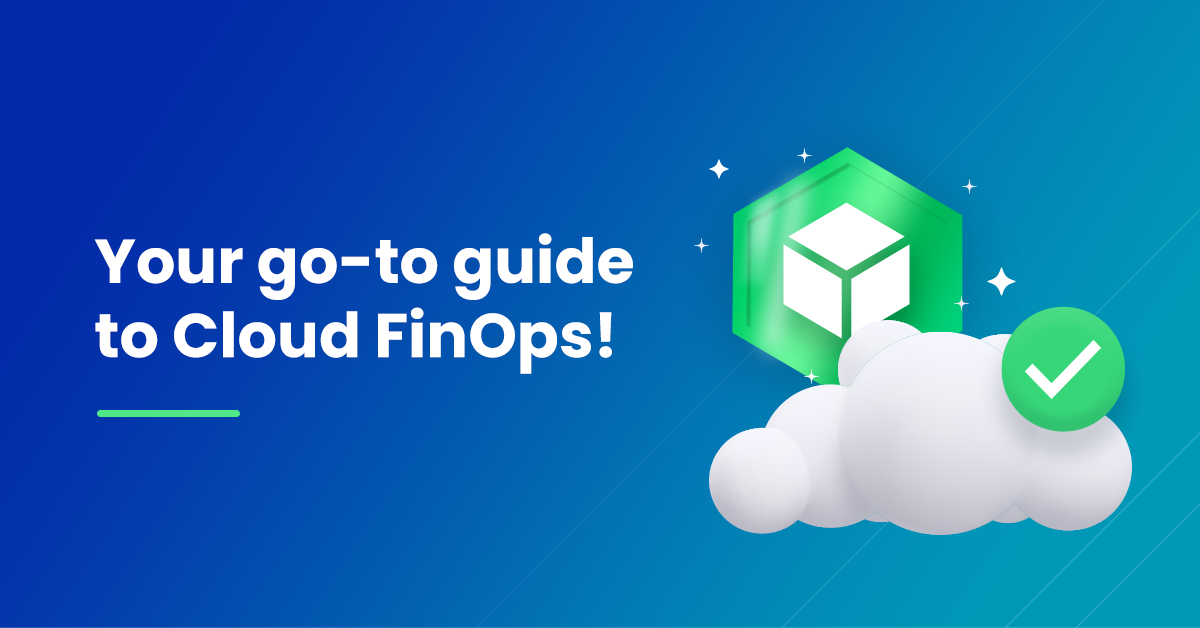Cloud FinOps, also known as Cloud Financial Operations, refers to the practice of managing and optimizing the costs of cloud computing resources. As organizations increasingly migrate to the cloud, it becomes critical to manage their cloud spending effectively to avoid overspending and achieve maximum return on investment (ROI). In this blog, we’ll take you through a go-to guide on Cloud FinOps and how you can implement it to optimize your cloud spend.
Set up a Cloud Cost Management Strategy
The first step to effective Cloud FinOps is to set up a cost management strategy that aligns with your business goals. This strategy should outline your cloud spend goals, such as minimizing costs or maximizing ROI, and define how you will measure and report on your success.
- Use a Cloud Cost Management Tool
The next step is investing in a cloud cost management tool that tracks and monitors your cloud spending in real time. A good tool should provide you with granular visibility into your cloud costs, identify cost drivers, and help you optimize your cloud spend. Some popular cloud cost management tools include nOps and AWS Cost Explorer.
- Implement Tagging and Resource Management
To optimize your cloud spend, it’s crucial to identify and manage all your cloud resources effectively. Tagging your resources allows you to group them based on their function, cost center, or owner, making tracking and managing them easier. Resource management tools like AWS Resource Groups can help you group your resources based on your tagging strategy.
- Set up Cost Allocation and Showback
Cost allocation involves attributing cloud costs to individual teams, departments, or projects, allowing you to identify areas of overspending and opportunities for cost optimization. Showback involves sharing cloud cost information with stakeholders, such as business owners, to help them understand the impact of their cloud usage on the organization’s bottom line.
- Monitor and Optimize Cloud Usage
To optimize your cloud spend, you need to monitor your cloud usage regularly and make adjustments where necessary. This involves identifying idle or underutilized resources, optimizing resource usage, and implementing cost-saving measures such as Reserved Instances, Spot Instances, and Auto Scaling.
- Foster a Culture of Cost Optimization
To ensure the success of your Cloud FinOps strategy, it’s crucial to foster a culture of cost optimization across your organization. This involves educating your teams on the importance of cost optimization, incentivizing cost-saving behavior, and regularly communicating cost-related metrics to all stakeholders.
- Continuous Improvement
Cloud FinOps is an iterative process, and it’s crucial to review and improve your strategy to ensure its effectiveness continuously. This involves regularly assessing your cloud spending goals, identifying areas for improvement, and implementing changes to optimize your cloud spending further.
Why is Cloud FinOps a vital concept to implement?
Cloud FinOps is an essential and in-depth concept because it enables organizations to optimize their cloud spend and achieve maximum return on investment (ROI). With the increasing adoption of cloud computing, cloud spending has become a significant expense for many organizations. Cloud costs can quickly spiral out of control without proper cost management, leading to overspending and budget overruns.
- Cloud FinOps enables organizations to manage their cloud costs effectively by providing them with the tools, processes, and best practices to optimize their cloud spend. By implementing a Cloud FinOps strategy, organizations can gain granular visibility into their cloud costs, identify cost drivers, and implement cost-saving measures. This not only helps them save money but also ensures that they are getting the most value out of their cloud investment.
- One of the key benefits of Cloud FinOps is its ability to provide organizations with a unified view of their cloud costs. This enables them to identify areas of overspending, optimize their resource usage, and make informed decisions about their cloud investments.
- Additionally, Cloud FinOps allows organizations to attribute cloud costs to individual teams, departments, or projects, enabling them to understand the impact of their cloud usage on the organization’s bottom line.
- Furthermore, Cloud FinOps also enables organizations to implement a culture of cost optimization across their teams. Organizations can foster a culture of continuous improvement and cost optimization by educating their teams on the importance of cost optimization, incentivizing cost-saving behavior, and regularly communicating cost-related metrics. This helps ensure that cost optimization is a top priority for all teams, not just an afterthought.
In conclusion, Cloud FinOps is an important and in-depth concept because it enables organizations to manage their cloud costs effectively and optimize their cloud spend. By implementing a Cloud FinOps strategy, organizations can gain granular visibility into their cloud costs, identify cost drivers, optimize their resource usage, and foster a culture of cost optimization across their teams. With cloud computing becoming increasingly prevalent, Cloud FinOps is an essential practice that all organizations should consider implementing to achieve maximum ROI.






